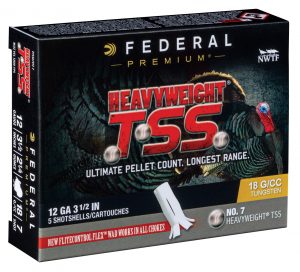There’s a reason so many popular and competitive turkey calling championships are held all around the country.
Hunters like to call, plain and simple.
In the spring woods, though, loud, aggressive, frequent turkey calling – the exact kind of thing that wins titles and trophies – isn’t always what’s best for bagging a gobbler. Less is often more, said Chris Ashley, the Missouri-based co-host of Small Town Hunting on the Sportsman Channel.
Hunters who call a lot, responding to every gobble they hear a bird make, are usually just convincing it to stay put, he said. It’s better to spark some curiosity.
“I want to play a little bit longer game than he’s playing,” Ashley said.
It might be fun to get a gobbler sounding off, agreed Cody Kelley, another co-host of the show. But it’s often counterproductive.
In nature, gobblers don’t go looking for hens. Females seek out males.
So causing a gobbler to be vocal just creates competition from real females, Kelley said.
“The more he gobbles, all those hens that don’t have a gobbler, they’re walking straight to him,” Kelley said.
When Ashley does call, he prefers to be subtle.
“You don’t have to be loud. In fact, I think loud hurts,” Ashley said. “Just be as soft as you can.”
He quits calling entirely when he catches a glimpse of an approaching bird. He wants that bird to have to seek him out.
If that takes a while, that’s OK.
“A lot of times, he gets to 70, 80 yards out and he stops. A lot of hunters will think he’s hung up. He’s not. He’s just waiting for what he thinks is a hen to come to him. That’s how things normally work,” Ashley said.
“The best thing to do is, once you see him, don’t say anything unless you have to.”
Patience comes into play in another way, too, added Kelley.
Sometimes, in spring, he calls not to attract gobblers, but hens.
A gobbler with a flock of hens is not going to leave them to track down one more, he noted.
“He’s got no reason to come over to where you’re at. He’s not coming over for one hen when he’s got 10,” Kelley said.
The other hens might, though, especially if the dominant female is inclined. And if she is, Kelley said, all will follow, including the gobbler.
So he calls to her.
“It’s going to go one way or the other,” Kelley said. “She’s going to get mad and take them the other way, or she’s coming to you. And if she comes to you, the whole flock’s coming. And then you’ve got him.”
Calling to hens is the one time Ashley calls a lot. He wants to keep those birds active.
“If you’ve got a hen answering you, you answer her back. If she yelps five times, you yelp six,” he said.
Just be prepared to do it for a long time.
“It can take an hour or two to call those hens over. Just patience is the biggest thing,” Kelley said.
Be ready and willing to do what it takes to get to birds in another way, too.
Ashley said that where turkeys are heavily pressured – in states with lots of turkey hunters, where much of the hunting occurs on public land – birds will hear lots of calling. The longer the season goes on, the truer that is.
So don’t be afraid to move around in search of spots less frequented by the competition.
“I’d probably get a mouth call and a shotgun and the best walking shoes I could find, and maybe a real turkey wing, and I’d walk as far away from anybody else as I can,” Ashley said.
“I’d do a little calling and maybe some scratching in the leaves. But I’d get away from anybody else.”
Besides turkey calling, there are ammunition innovations for gobblers
If less is more when turkey calling, the same is increasingly true for turkey ammunition.
For years, the standard has been shotshells packed with No. 4 or 5 shot. Heavy loads – think 3.5-inch magnums – of such big pellets have been the norm.

Turkey hunting ammunition is evolving.
That’s changing.
A number of manufacturers are marketing turkey loads that mix 6, 7, 7.5 and even 9 shot.
Federal Premium, for example, offers “Heavyweight TSS” loads. The TSS stands for “tungsten super shot,” pellets said to be 56 percent heavier than lead.
The benefit is their ability to retain energy downrange even in smaller sizes. A load of 7s sends twice as many pellets downrange yet still hits as hard as similar-sized shells filled with larger shot, for example.
Small Town Hunting, together with Apex Ammunition, offers similar “Small Town Hunting Blend” shells packed with a mix of 7.5 and 9 shot.
“We’re holding patterns at 60 yards like I was holding at 25, 30 yards just a few years ago. At 60 yards, you can still put over 300 pellets in a 10-inch circle,” said Small Town’s Chris Ashley. “It’s pretty much changing the game in turkey patterns.”
He doesn’t recommend taking longer shots.
“But if you miss that rascal or wound that bird at 10 or 15 yards, and he runs out and stands there, you don’t have to worry about it. You can take him at 50 or 60. A 50-yard shot with this TSS is a 20-yard dead turkey,” Ashley said.
Hunters who experiment with TSS ammo, from whatever manufacturer, still need to pattern their shotgun, though, added the show’s Cody Kelley.
“You don’t want to ever grab a shell, put it in your shotgun and go hunting without knowing what it’s doing,” Kelley said.








